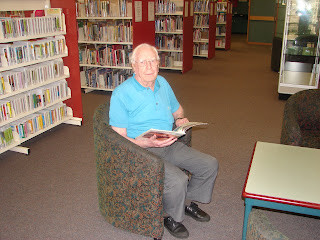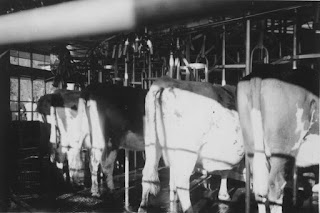This post comes from Dr Ian Willis' excellent blog
Camden History Notes. Ian has kindly agreed to share it and the author Fiona Woods has also agreed for it to be republished.
The article demonstrates the power of positive thinking and how a potential negative situation can be turned into a positive. I hope you find
Fiona's Story: Memories of Hope enjoyable and inspiring.
These memories are a moving personal account of a childhood growing in
Airds in the 1970s and 1980s.
This story from former Airds’ resident Fiona Woods acts a counterpoint to
stories of despair and loss from these suburbs. In many ways,
Airds was a suburb on the fringe of the world. Many residents were living on the edge and faced many challenges.
Woods School Sisters (F Woods)
At the moment many Australian’s have felt a heightened sense of anxiety and need a little hope. Since the bushfires on Australia’s East Coast from September 2019 there are many grim stories.
The uncertainty and lack of control have continued into the Covid crisis, and many feel despair and at a loss. Fiona’s story provides a ray of sunshine in today’s shadows.
Fiona uses memory as a way of explaining the meaning of past events and peoples involvement in them. She has not created a meaningless collection of unrelated facts.
Fiona says, ‘Everyone has a story. It’s easy to think of our ancestors as names on a page or a black and white photograph of well-dressed, ‘serious people’.
‘But behind those images is a life that has been lived through both adversity and celebration. With love and pain and all that goes with being human. So many stories that have been untold’.
Fiona’s memories are about a suburb where some residents succeeded and others did not.
This is Fiona’s story and how hope can win through in the end.
Growing up in Airds
Fiona Woods
Growing up in a housing commission estate is not something that traditionally elicits feelings of pride and success. But for me, it does just that. I moved into
Airds in 1977, when I was three years old.
My dad had suffered a traumatising work accident, one that would leave him with debilitating, lifelong injuries. My parents already had three small children and were expecting a fourth.
Fiona Woods and brother
I can only imagine how difficult it would have been for them – Dad was in and out of the hospital, and Mum didn’t drive. Here was where their neighbours stepped in, and my earliest memories of the community began.
Back then, neighbours weren’t just people you waved to from the driveway. They were people you could count on, whether it be for food or childcare or even a simple chat over a cup of tea.
I grew up as part of a village, where a lady in my street took my sisters and me to our first gymnastics lessons. I developed friendships that have stood the test of time. I have even taught alongside my closest childhood friend, an experience that is something I treasure.
Woods Kids at Airds
I laugh with my siblings that we can never shop with Mum in
Campbelltown – she remembers everyone who lived remotely near us. But for her, it was the friendship she struck up with her new neighbour the day they both moved in that is the most special.
A friendship that has lasted for over 43 years. It still involves daily coffee catch-ups and phone calls.
I started Kindergarten at
John Warby Public School, where I learned more than just academics. It was during this time that I experienced how the love of a teacher extends beyond the classroom.
I truly believe it was these experiences that led me to join the profession. I had so much to give back. I remember some of these teachers visiting our home to check in on our parents and even drive them to appointments.
They really took the home-school connection to a new level! I will be forever grateful for the investment they made in us and their belief that we would all succeed.
Living in
Airds during the late 70s and early 80s was a time where friendships were built, and people stuck together. It was the freedom of riding bikes with friends until the street lights came on, building makeshift cubbies and performing concerts for the neighbours.
I can still remember the excitement of walking to the
local shops with my sisters to buy a few groceries for Mum. The constant search for ‘bargains’ in the hope there would be twenty cents leftover to buy some mixed lollies.
To this day, I still can’t resist a markdown and resent paying full price for anything. Lollies aside, the mere act
walking to the shops was an adventure. Teetering along with the giant concrete snake and pretending we were on a secret journey.
Our simple life ensured we had opportunities to use our imagination and explore the world around us, creating memories with our neighbours and friends.
Airds Shopping Centre 2020 (I Willis)
But life wasn’t always easy. I remember eating dinner and seeing my parents eat toast because there wasn’t enough to go around.
By this stage, they were raising five children, including my youngest brother, who rarely slept for more than an hour each night. He became a case study for professors looking into hyperactivity disorders.
That was little comfort to my mum, who was also Dad’s primary carer, living on minimal sleep and a frugal budget. Yet she showed up every day, always reminding us about the power of education and instilling a true love of learning in us all.
What we lacked for in material possessions was made up by so much more. We learned to be resilient and grateful, and we learned to be kind. We continue to work hard in our chosen fields, always considering how we can help others.
One of the proudest moments for our parents was seeing all five children graduate from university. That and the ongoing pride they feel for their thirteen grandchildren, who love their Nan and Pop like no one else.
Woods Family Picnic (F Woods)
The roots that were planted back in those early days have been tended with such love and care.
Those trees continue to flourish, branching out into wonderful opportunities. I am forever grateful for the foundations my childhood was built upon.
And I proudly tell everyone about where it is I came from.











































